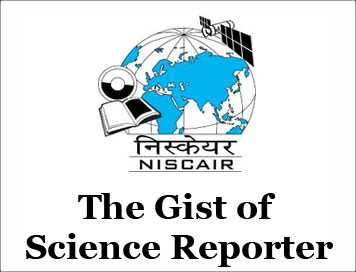(HOT) UPSC Current Affairs 2025 PDF
NEW! The Gist (NOV-2025) | E-BOOKS
(GIST OF SCIENCE REPORTER) NASA‑ISRO Synthetic Aperture Radar (NISAR)
(GIST OF SCIENCE REPORTER) NISAR
(SEPTEMBER-2025)
NISAR
Recently, the NASA‑ISRO Synthetic Aperture Radar (NISAR), the first joint satellite of the Indian and U.S. space agencies, was launched by ISRO with the help of the Geosynchronous Satellite Launch Vehicle (GSLV) from the Satish Dhawan Space Centre in Sriharikota.
Key features of the NISAR Satellite Mission
-
It is a global microwave imaging mission operating in the L and S bands that may gather fully polarimetric and interferometric data.
-
S‑band radar system: S-band frequencies are in the 2 to 4 GHz range and are used for radar, weather forecasting, and some communication satellites.
-
L‑band radar system: L-band frequencies range from 1 to 2 GHz and are used for satellite navigation (GPS), mobile satellite phones, and satellite radio.
-
Additionally, NASA supplies the orbit manoeuvre plan and RADAR operations plan, while ISRO handles satellite commands and operations.
-
The ground station support provided by NASA and ISRO will assist the NISAR mission by enabling the download of the acquired images, which will then be distributed to the user community after undergoing the necessary processing.
-
Mainframe Bus: I3K Structure, 3-axis stabilised spacecraft.
-
Resolution: 5-100 m with a visible swath of about 240 km
-
Orbit: Polar, sun‑synchronous
-
Launcher vehicle: GSLV Mk-II
-
Orbit altitude: 747 km
-
Mission life: 5 years
-
The data gathered using S-band and L-band SAR from a single platform will help scientists better understand the changes taking place on Earth.
Key applications feature of the NISAR Satellite Mission
-
Every twelve days, NISAR will take pictures of the world’s land and ice-covered surfaces, including islands, sea ice, and a few oceans.
-
The main goals of the NISAR mission are to investigate land and ice deformation, land ecosystems, and oceanic regions in fields that are of shared interest to the scientific communities of the United States and India.
-
The NISAR mission will also help measure woody biomass and its fluctuations.
-
Track changes in the extent of active crops and recognise the shifts in the size of the wetlands map.
CLICK HERE TO DOWNLOAD FULL PDF
CLICK HERE TO DOWNLOAD UPSC E-BOOKS
Study Material for UPSC General Studies Pre Cum Mains
Get The Gist 1 Year Subscription Online
Click Here to Download More Free Sample Material
<<Go Back To Main Page
Courtesy: Science Reporter



